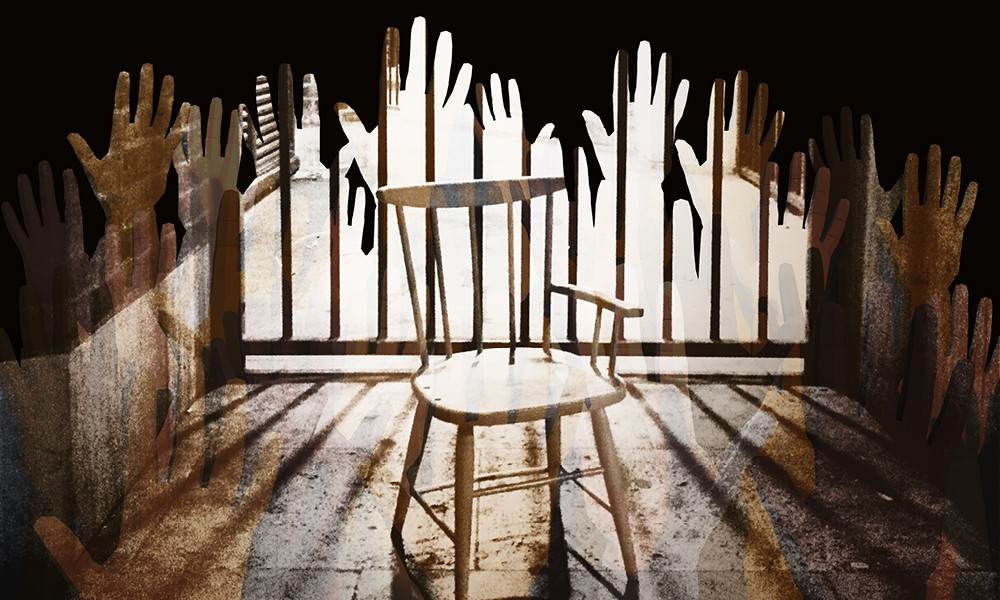COVID-19 introduced a plethora of conundrums when it came to keeping the community safe–with these issues further complicated when it came to the prisons during the pandemic. In Queensland, strict isolation measures were introduced to protect the prison population from a potential outbreak of the virus. However, advocacy groups have raised concerns that the use of isolation in Queensland’s prisons has amounted to a serious violation of human rights[i].
Research around the world has demonstrated that placing people in solitary confinement, even for short periods of time, can cause serious psychological harm which may be irreversible.[ii] It can be argued that the incursions on human rights that have occurred for people in prison during the pandemic have been disproportionate and that less restrictive measures could have achieved the purpose of preventing transmission in prison–begging the question, what should have been done instead?
Emergency declarations and isolation
Between March and September 2020, emergency declarations were imposed throughout Queensland prisons to enable restrictions on prisoner movement to be imposed, and visits and access to privileges to be limited.[iii]
As a result of these declarations, all visits ceased.[iv] Visits by certain professionals could occur subject to approval, but no personal or legal visits were permitted. Further to this, Queensland’s corrective services facilities began implementing isolation measures, and many prisoners were segregated to limit the risk of COVID-19 infection.
Isolated prisoners were confined to their cells for 14-day periods without any out of cell time or engagement with others. Unlike people quarantined in the community, isolated prisoners did not have access to fresh air, exercise, internet or mobile phones and some experienced poor living conditions.
The impact of isolation on prisoners’ human rights
Prisoners in medical isolation were effectively being held in solitary confinement as they were locked down in a cell for at least 22 hours a day with limited or no association with other prisoners.[v] Placement in solitary confinement conditions can result in serious psychological harm, which may be permanent. Recent research out of the University of Queensland suggests that people in solitary confinement often display symptoms of psychosis after only a short period of time.[vi] They also frequently engage in disordered and obsessive behaviour as well as acts of self-harm.[vii]
Placement in solitary confinement has been found to breach prisoners’ human rights. For example, the Supreme Court of British Columbia recently held that laws authorising administrative segregation breached the right to life, liberty and security of person because of the risk of suicide and the ‘significant risk of serious psychological harm’ that solitary confinement created.[viii] The Supreme Court of New Zealand has also held that solitary confinement may breach prisoners’ right to humane treatment when deprived of liberty where their ‘basic human needs, including personal dignity and physical and mental integrity’ are not being met.[ix] The European Court of Human Rights has held that solitary confinement may amount to ‘inhuman treatment’ in circumstances where the prisoner experiences ‘complete sensory isolation, coupled with total social isolation.’[x]
In Queensland, the recently passed Human Rights Act 2019 (Qld)requires public entities, including corrective services, to act and make decisions in a way that is compatible with human rights, and in making decisions, to give proper consideration to relevant human rights.[xi] Based on the Canadian approach, the Queensland Human Rights Act recognises that rights may be limited, but only where they are reasonable and demonstrably justified.[xii]
While limitations on human rights may well be reasonable and justifiable in the context of COVID-19, to be human rights compliant, Queensland Corrective Services is required consider whether any less restrictive alternatives existed to achieve the same purpose. The WHO has stated that medical isolation should only occur as a matter of ‘medical necessity’ and that, even in the context of COVID-19, human rights protections still apply, particularly the rules that prohibit prolonged solitary confinement and cruel, inhuman or degrading treatment, and that require external monitoring of correctional facilities.[xiii]
Isolation measures in Queensland’s prisons did not always comply with minimum legislative requirements. For instance, prisoners in solitary confinement must have access to reticulated water, and a toilet and shower facilities and be given the opportunity to exercise in the fresh air for at least two daylight hours a day, unless a doctor or nurse has advised otherwise.[xiv] Yet isolated prisoners were not provided exercise opportunities and some had limited access to food and drinking water, and were restricted as to the number of times they could flush the toilet. Prisoners spent extended periods of time in complete social isolation and in some circumstances, did not have contact with family and friends or their legal representatives.
Many of these restrictions infringed prisoners’ human rights and some were not consistent with the goal of limiting the spread of COVID-19. Locking a prisoner down in their cell for 24 hours a day with no opportunity for fresh air or exercise may amount to cruel, inhuman and degrading treatment.[xv] Preventing prisoners from communicating with others may also breach family and cultural rights protected under the Human Rights Act.[xvi] Mobile phones, free calls on the telephone system and access to videoconferencing (through iPads and other devices) should have been rapidly provided to prisoners in isolation, particularly for prisoners with children.[xvii] Limiting access to lawyers and external monitors raises additional human rights concerns[xviii] and could similarly have been provided without increasing transmission risk through the use of technology. The failure to do so meant that adequate accountability measures were not in place at a time when they were needed most.
[i] Ben Smee, ‘Some prisoners spending 22 hours a day in solitary confinement due to Queensland Covid lockdown’, The Guardian (online, 16 September 2020) <https://www.theguardian.com/australia-news/2020/sep/16/vulnerable-prisoners-sent-to-solitary-confinement-during-queenslands-covid-lockdown-lawyers-say?fbclid=IwAR3Rb4e4CcP-uQl1SQ9A752eCtQVXf1quDaED9lJUhvJ4rbXBdqmNlyRR9s>.
[ii] Terry A. Kupers, ‘What To Do With the Survivors? Coping with the Long-Term Effects of Isolated Confinement’’ (2008) 35(8) Criminal Justice and Behaviour 1005, 1006.
[iii] For all Queensland Corrective Services Emergency Declarations, see <https://www.publications.qld.gov.au/dataset/emergency-declarations>.
[iv] ‘High Level Summary of QCS Management of COVID-19 within Correctional Centres: current 23/04/2020’, Queensland Corrective Services (Summary, 23 April 2020) <https://corrections.qld.gov.au/wp-content/uploads/2020/04/QCS-Stakeholder-infomation_lr.pdf>.
[v] United Nations Office on Drugs and Crime, The United Nations Standard Minimum Rules for the Treatment of Prisoners, GA Res 70/175, UN Doc A/RES/70/175 (8 January 2016, adopted 17 December 2015) rule 44 (‘The Nelson Mandela Rules’).
[vi] Tamara Walsh et al, ‘Legal Perspectives on Solitary Confinement in Queensland’, University of Queensland School of Law (Report, 2020) 10-11.
[vii] Ibid 6.
[viii] British Columbia Civil Liberties Association v Canada (Attorney General) 2018 BCSC 62, [247].
[ix] Taunoa & Ors v The Attorney-General & Anor [2008] 1 NZLR 429, 471 [80].
[x] Mathew v The Netherlands (European Court of Human Rights, Application No 24919/03, 29 September 2005) [199], [205].
[xi] Human Rights Act 2019 (Qld) s 58.
[xii] Human Rights Act 2019 (Qld) s 13.
[xiii] WHO, ‘Preparedness, preventing and control of COVID-19 in Prisons and other Places of Detention: Interim Guidance’, World Health Organisation Regional Office for Europe (Report, 15 March 2020) 5.
[xiv] Corrective Services Regulation 2017 (Qld) s 4.
[xv] Ahmad & Ors v The United Kingdom (European Court of Human Rights, Application No 2402/07, 10 April 2012).
[xvi] Human Rights Act 2019 (Qld) ss 26, 27.
[xvii] Catherine Flynn, ‘Getting There and Being There: Visits to Prisons in Victoria − the Experiences of Women Prisoners and Their Children’ (2014) 61(2) Probation Journal 176, 178.
[xviii] Human Rights Act 2019 (Qld) s 32; The Nelson Mandela Rules, UN Doc A/RES/70/175 (n 5) rule 45(1).








Share this article